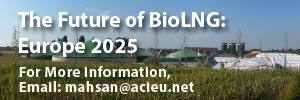Speeding up the AD process
A new study by scientists from Cornell University has looked into the possibility of coupling anaerobic digestion (AD) with hydrothermal liquefaction (HTL) for the conversion of food waste into energy products.
Hydrothermal liquefaction converts food waste into oil and an aqueous phase rich in carbon. This hydrothermal aqueous phase may then be converted into biomethane via anaerobic digestion.
The scientists belief that combining AD and HTL could drastically speed up the whole process of converting food waste into renewable energy and fuels. In an interview with Waste Dive, Roy Posmanik, the lead author of the paper, said: "The HTL takes 20 minutes [to] 60 minutes, and then you have the aqueous phase, which takes more like three or four days [to digest], rather than three weeks."
For their tests, Posmanik and colleagues subjected a mixture of polysaccaharides, proteins and lipids, representing food waste, to hydrothermal processing at temperatures of 200 to 350 °C. They found that the anaerobic biodegradability of the hydrothermal aqueous phase was lower than when the temperature of the hydrothermal processing was increased.
Although the chemical composition of hydrothermal aqueous phase affected the anaerobic biodegradability, no inhibition of biodegradation was observed for most samples.
As the authors note in the abstract to their study, published in a recent edition of the journal Bioresource Technology, “Combining hydrothermal and anaerobic digestion may, therefore, yield a higher energetic return by converting the feedstock into oil and biomethane.”




















